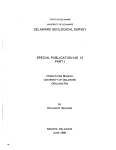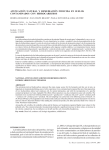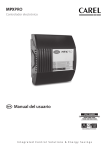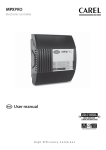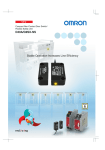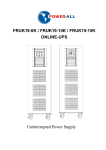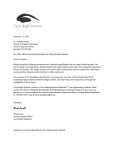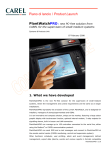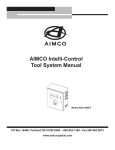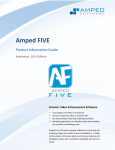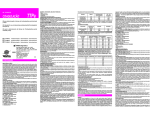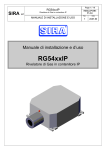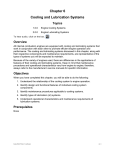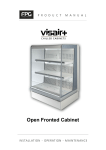Download PLC/SCADA systems in automation control design for individual
Transcript
PLC/SCADA systems in automation control design for individual quick freezing process in cooling tunnels Goran Jagetić, Marko Habazin, Tomislav Špoljarić University of Applied Sciences - Department of Electrical Engineering, Zagreb, Croatia [email protected], [email protected], [email protected] 1896 Compressor Evaporator temp. probe Heaters Fans Simple cooling process [1] is thermal process used in refrigeration systems for maintaining room temperature via temperature regulator and at least one temperature probe. Temperature is achieved and maintained by correct switching of refrigeration system elements – compressor, electromagnetic valve, evaporator fans and condenser fans. This basic type of operation is not time-dependent and is most commonly used in small scale cooling systems with required temperature above 0°C. When required room temperature needs to be maintained below 0°C, refrigeration system needs defrosting for evaporator section due to icing. This is done by switching the electrical heaters that need to be inserted into the evaporator section or, when electrical defrost is not available, by defrosting with hot gas. Defrosting element operation (heater or valve) is done separately from other refrigeration system elements (compressor, fans, etc.). When defrost is needed, control design takes form of one cycle regulation [1] thus making it time dependent. A repeating cycle of operation consists of EM valve INTRODUCTION Condenser (fans) Regulator I. two periods of operation: refrigeration period and defrosting period. Refrigeration period is longer and in it refrigeration elements (compressor, condenser and evaporator fans) are switched according to room temperature probe/probes. Defrosting period is much shorter and in it defrosting elements (electrical heaters/hot gas valve) are switched according to evaporator temperature probe or by time (offdelayed timer function of a regulator). Fig. 1 shows simplified block diagram of a small scale refrigeration system operated by one-cycle regulation (refrigeration with defrost). Room temp. probe ABSTRACT - Individual quick freezing process is a complex cooling process that takes place in cooling tunnels and is used for dynamic thermal processing of certain type of goods. Type of goods and temperature of goods that needs to be achieved over specific time in cooling tunnel determine the complexity of cooling process. Complex cooling process is therefore divided into two types of regulation. Temperature regulation, the inferior type, is used for control of the cooling and defrosting parts of the system according to predefined room temperature. Superior time-cycle regulation is used to control various cycles of operation by defining its time frames. These cycles together form a period of time in which the cooling system is appropriately used for goods' freezing. This paper describes further development in automation control design for complex cooling process in cooling tunnels. This design includes selection of appropriate control devices (temperature/pressure regulators, PLC device, HMI/SCADA), definition of LADDER program solution for dynamic time-cycle control, connection and configuration of HMI/SCADA system used for defining the number/duration of time cycles of cooling and defrosting operations and monitoring the system conditions. Evaporator Cold room Figure 1. Block diagram of a simple cooling process On a fig. 2 a time flow diagram of a simple cooling process is shown with one cycle control design (refrigeration with defrost period). A repeating time cycle duration is described with simple equation: 𝑇𝑐 = 𝑇𝑟 + 𝑇𝑑 , (1) MIPRO 2015/SP durations, and three defrost periods of same duration. Processing time is defined with 𝑇𝑝 : 𝑇𝑝 = 𝑇𝑟1 + 𝑇𝑟2 + 𝑇𝑟3 + 3 ∙ 𝑇𝑑 , Tr time Td Tc Tc Tc off Tr1 Tc1 Tr2 Tc2 Tr3 time Td off (2) on Td on Td process state process state where 𝑇𝑟 is a refrigeration period duration and 𝑇𝑑 is a defrost period duration. When refrigeration process is active, temperature regulation according to room temperature probe is active. When defrost process is active, temperature regulation according to evaporator temperature probe is active. Tc3 Tp refrigeration process state defrost process state refrigeration process state defrost process state Figure 2. Time flow diagram of a simple cooling process The complexity of a described control system may increase in larger cooling systems by adding also the pressure control in suction line (for sequential switching control of the compressors in a multiset) and discharge line (sequential switching control of condenser fans). Most of today’s temperature regulators have a two cycle control, which also increases the complexity by defining durations of two different refrigeration periods, while defrost duration is the same in each cycle, but is also user defined. All these additions still make the cooling process simple. II. COMPLEX COOLING PROCESS AND INDIVIDUAL QUICK FREEZING When defining complex cooling process, one needs to take into account that room temperature is not the main parameter. Room temperature is intermediary parameter for achieving the main parameter - temperature of goods that needs to be achieved over time. This type of processing certain type of goods requires specific definition of time cycles involved in process [3]. By specific definition it is assumed that each cycle has its duration defined by end user. It means that each operation period, whether it is refrigeration or defrost period, has also its duration defined in each of the cycles. A number of cycles is also defined by end user. Because there are a lot of types of goods that can be cooled or frozen over time [5], control system design for one system needs to have a possibility for end user to define number of operating cycles and various durations of that cycles, thus making it possible for one system to process different type of goods. This type of design makes the system timedependent, which requires more than one control device to maintain the process on a desired level of efficiency. On fig. 3 a time flow diagram of one such complex cooling process is shown. This process consists of three refrigeration periods of different MIPRO 2015/SP Figure 3. Time flow diagram of a three-cycle complex cooling process Processing time is a duration of a whole process and it can be repeated. But in individual quick freezing it is a duration of a freezing process of goods, therefore it is not repeated until the next goods’ exchange. There is a possibility for defrost and refrigeration elements of a system to act at the same time for a brief moment when system goes from one state to another. That may be unwanted in larger systems from perspective of rational electric energy consumption and unwanted protective elements’ switching states. In that case pause periods are introduced. Pause periods maintain the system inoperative for short period (about 5 to 10 seconds) in order the switching to be done properly. With this in mind, processing time for 𝑛 number of cycles can be generally described as: 𝑛 𝑇𝑝 = ∑(𝑇𝑝𝑟,𝑖 + 𝑇𝑟,𝑖 + 𝑇𝑝𝑑,𝑖 + 𝑇𝑑,𝑖 ), (3) 𝑖=1 where for i-th cycle terms are: - 𝑇𝑟,𝑖 – refrigeration period, - 𝑇𝑑,𝑖 – defrost period, - 𝑇𝑝𝑟,𝑖 – pause period before refrigeration, - 𝑇𝑝𝑑,𝑖 – pause period before defrost. Complex cooling process may be implemented in control design of a small scale refrigeration system (temperature control only with switching of compressors and fans), as well as in larger scale refrigeration systems’ control designs with pressure and temperature control. One such design is described in this paper. This proposed design is implemented to work with large scale refrigeration system in a freezing tunnel. Cooling process that takes place in a tunnel is also known as individual quick freezing. Individual quick freezing is a refrigeration process of a complex nature that manages predefined 1897 Compressor 2 Condenser 1 fans AUTOMATION CONTROL DESIGN OF A FREEZING TUNNEL Condenser 2 fans TEX valve Fans Heaters EM Valve TEX valve Fans Heaters Evaporator 2 regulator device Compressor and condenser Control EM Valve Devices used in IQF control design can be separated in two groups – devices used for time regulation and devices used for temperature/pressure regulation. Devices used for time regulation are PLC and SCADA/HMI devices, and for temperature and pressure regulation are used various types of specific microcontroller devices. Freezing tunnel described in this paper has a carrying capacity of 30 tons of different types of fresh fish. Cooling system for that freezing tunnel has two screw type compressors, two evaporators (three fans each) and two condensers (three fans each). Compressor motors are operated by part winding start contactor combination, and all fans are operated by frequency converters. For time regulation Eaton's EASY® relay device Easy800 with additional analog I/O module and XV touch panel is chosen. For temperature/pressure regulation chosen devices are: Carel’s pRACK® microcontroller device for compressor and condenser control and MPXpro® microcontroller device for evaporator, electromagnetic and thermoexpansion valve operation. Compressor control operates according to suction pressure level, temperature and pressure of oil in compressor and cooling medium temperature. Condenser control operates according to discharge pressure level. Since the pRack device manages compressor, the only signal needed is digital input for start/stop. According to that signal and to several 1898 Compressor 1 Evaporator 1 regulator device III. probes inside the compressor, the pRack device manages the switching of the compressor. Evaporator control with MPXpro® operates according to inlet and outlet temperature of the evaporator during refrigeration period. In defrost period electric heaters are switched according to evaporator temperature probe. MPXpro ® controller manages also the opening of electromagnetic valve and sequential opening of the thermoexpansion valve. Compressor/condenser microcontroller device type of goods. Generally, the term or its abbreviation IQF relates to fast freezing process of solid foods such as various types of vegetables, meat, fish or fruit while trying to preserve virtually most of the properties of the parent foodstuffs. A great and fast reduction in room/tunnel temperature reduces rapidly the temperature of goods. This halts the activities of microorganisms that cause goods to deteriorate and generate toxic substances. Additionally, the enzymatic and biochemical reactions of the digestive enzymes which are found in all living tissues and whose activities continue even after death are also greatly reduced. In goods frozen with IQF process there is no clumping together and there aren’t any pieces of grains. Goods remain individual separate pieces. Hence the term “individual” [6]. There are several types of individual quick freezing processes [4], and the one described in this paper is called individual quick freezing in air-blast freezing tunnels. The goods intended to be frozen are placed on trays. These trays are placed inside the tunnel, where freezing process takes place for a specified amount of time. Afterwards, the packages are removed and usually taken to cold rooms intended for storage. Freezing tunnel Evaporator Control Figure 4. Simplified temperature/pressure control design for individual quick freezing process example Time cycle control operates according to initial values of number of cycles and duration of cycles entered by end user. This provides desired variability in defining the parameters of processing time by end user. With this the process becomes dependable on goods’ type and desired quality of freezing process. When refrigeration period is active, every refrigeration element of the system works according to its regulator. Compressor is active if pressure MIPRO 2015/SP control demands switching on, and if protective devices are not in fault mode: if oil temperature and pressure are in defined limits, cooling medium temperature is also in defined limits and motor protective switch is not tripped. Condenser fans are switched on if discharge line pressure control demands activation and if protective devices are not are not in fault mode. In similar fashion, evaporator fans are operated by evaporator control device and its predefined temperature. All fans have a frequency converters for fine regulation of temperature and pressure. In defrost period only electric heaters are switched on. This is done according to temperature probe in evaporator connected evaporator control device. In pause period all system components are switched off. IV. PROGRAM SOLUTION WITH LADDER LOGIC Complex cooling process is defined with variable number of cycles. Each cycle is defined with sequence pause-refrigeration-pause-defrost. Minimum number of cycles in a process are three cycles and maximum number are seven cycles. Defrost and pause period are the same for all cycles and are user defined. Refrigeration period in each cycle is separately defined after selecting the number of cycles. Before programming the system for a cooling purpose starts, it is necessary to make a list of variables. The list includes the physical and virtual I/O variables used later in the program and, and is shown in table 1. TABLE I. EASY 822-DC-TCX (Main base) Device EASY 411-DC-ME (Analog module) The code programming of the process is done in EASY Soft-Pro 6 software package [2]. It is used for communication setup, definition of variables and writing the code of the process. For the purpose of easier understanding, the code is sampled into several main sections. Communication protocol known as easyNET ® network (serial interface RS232) has been chosen for purpose of sending/receiving data between HMI interface (end user) and PLC device. Figure 5. Hardware selection for freezing tunnel project design in easySOFT pro v6.9 First part of the circuit diagram includes getting a number of cycles from easyNET® and transferring it to a memory location in easy822 (block GT01). Comparator blocks CP01 and CP02 are used for checking whether the number of cycles is appropriately selected. If the check condition is fulfilled, a conditional marker M10 is set. This is shown on fig. 6. Based on the user input the program takes number of cycles from the SCADA. LIST OF VARIABLES IN LADDER PROGRAM I/O signal I1 I2 I3 I4 I5 I6 I7 I8 I9 I10 I11 I12 Q1 Q2 Q3 Q4 QA1 AI1 AI2 AI3 AI4 AI5 AI6 AO1 AO2 MIPRO 2015/SP Name Local start/stop Local/remote Compressor 1 active Comp. 1 motor protection fault Comp. 1 oil protection fault Evaporator 1 fan mot. prot. fault Condenser 1 fan mot. prot. fault Compressor 2 active Comp. 2 motor protection fault Comp. 2 oil protection fault Evaporator 2 fan mot. prot. fault Condenser 2 fan mot. prot. fault Refrigeration period activation Defrost period activation Pause period activation End of process Speed reference - evaporator fans Evaporators’ inlet temperature Evaporators’ outlet temperature Suction line pressure Discharge line pressure Actual evaporator fan speed Actual condenser fan speed Speed reference - condenser fans (Optional for compressor speed ref.) Figure 6. Program section 1 – acquirring a number of cycles Figure 7. Program section 2 – acquirring a duration of cycles 1899 On fig. 7 a data acquisition from SCADA (GT03-GT08 function blocks) concerning duration of refrigeration periods in each cycle, as well as fixed defrost and pause periods, is shown. Digital input data acquisition is done by putting bit values to easyNET® network (blocks 4SN01 4SN10) according to digital input states (I03-I12), as shown on fig. 8. memory location where GT block put the duration of refrigeration and transfers it to a memory location of a refrigeration timer. Figure 10. Program section 5 – refrigeration time transfer Figure 8. Program section 3 – digital input acquisition User input on SCADA determines the start of the process (4RN01 contact). It is also possible to start the process manually from the electronic cabinet using the 0-1 switch on the door of the cabinet. Start is defined with rising edge marker M05 that is enabled on two additional conditions: refrigeration times for first three cycles have been set (M06) and defrost and pause periods have been set along with number of cycles (M07). Also, finishing the process depends on value in counter of cycles (C01) or local switch position (I01). Analog input data acquisition is done by 100ms sample flashing timer. Each time a timer contact makes/breaks, certain data is transferred via "put value to NET" block (PT01-PT06) from input to easyNET® memory location in form of variable MW (marker word with 16bit length), as shown on fig. 9. Figure 11. Program section 6 – conditions for starting and finishing of the process Starting and repeating condition of the process is shown on fig. 12. Timer starts counting on a falling edge of a pulse given by starting (M05) or repeating cycle marker (M09). In this instance a counter C01 counts up. Figure 9. Program section 4 – analog input acquisition In each cycle, data of different refrigeration period duration needs to be transferred. This is done by using data block which transfers data from 1900 Figure 12. Program section 7 – starting the first timer of the process and repeating the cycle When timer T01 is done with counting, similar process starts with refrigeration timer T02. This MIPRO 2015/SP process repeats with pause timer T03 and defrost timer T04. After T04 is done, a marker M09 for repeating the cycle is set and the process repeats in next cycle if a counter C01 contact allows it. cable is used for connection of a panel and first PLC device. All three PLC devices are connected via Eaton’s easyNET® network. A program for selected HMI device is made in Eaton’s Galileo® software package. Described cooling system design with SCADA is shown on fig. 15. XV Touch Panel HMI/SCADA EASY 822-DC-TCX + EASY 411-DC-ME Tunnel 3 control PLC 3 – TUNNEL 3 EASY 822-DC-TCX + EASY 411-DC-ME Tunnel 2 control PLC 2 – TUNNEL 2 PLC 1 – TUNNEL 1 EASY 822-DC-TCX + EASY 411-DC-ME Figure 13. Program section 8 – pause, refrigeration and defrost timers counting When the process is finished, a timer and counter are reset, as is shown on fig. 14. Evaporator control Suction line probe Compressor/condenser control Room temperature probes Discharge line probe Tunnel 1 control Type of signals: RS 232 serial easyNET® Analog / digital signals Figure 14. Program section 9 – reset of timers and counter upon completion of the process HMI / SCADA SYSTEM CONNECTION In this section, a RS232 serial connection between Easy822 PLC device and HMI device is observed. Other ways to ensure PLC-HMI connection include RS485 and Ethernet protocols. This cooling process is designed for general purpose and with minimum cost and primarily for that reason RS232 communication is chosen. Also, with this type of communication no additional converter modules are needed. In this paper, proposed SCADA system is designed to work in a cooling system with three freezing tunnels. Control design with three PLC devices is selected to show the modular behavior of a proposed three tunnel control system. In this case each tunnel’s control system is presented as one module of that design. Every tunnel is controlled by one EASY relay with additional analog module. Eaton’s XV-152 touch panel is selected as a HMI device. Touch panel is connected with PLC devices through serial RS232 communication cable. This MIPRO 2015/SP Data used by SCADA system consists of input signals listed in table II and output signals listed in table III. TABLE II. Device XV-152 Touch panel V. Figure 15. Observed cooling system design LIST OF INPUT SIGNAL VARIABLES IN SCADA Input signal I1 I3 I4 I5 I6 I7 I8 I9 I10 I11 I12 AI1 AI2 AI3 AI4 Name Local start/stop Compressor 1 active Comp. 1 motor protection fault Comp. 1 oil protection fault Evaporator 1 fan mot. prot. fault Condenser 1 fan mot. prot. fault Compressor 2 active Comp. 2 motor protection fault Comp. 2 oil protection fault Evaporator 2 fan mot. prot. fault Condenser 2 fan mot. prot. fault Evaporators’ inlet temperature Evaporators’ outlet temperature Suction line pressure Discharge line pressure 1901 TABLE III. XV-152 Touch panel Device LIST OF OUTPUT SIGNAL VARIABLES IN SCADA Output signal Q1 Q2 Q3 Q4 QA1 Name By selecting, end user can gain access to other masks used for monitoring and control each of the tunnels. One such mask (monitoring the tunnel 1) is shown on fig. 18. Pause period activation Refrigeration period activation Defrost period activation End of process Speed reference - evaporator fans Communication with easyNET® protocol manages up to 8 connected devices, and the last element of the network needs to be terminated with a bus termination resistor. Example of a wiring concept of such network is shown on fig. 16. Figure 18. Monitoring mask of SCADA design for freezing tunnel 1 When connecting by easyNET® several Easy800 stations operated by the same LADDER diagram and one HMI device, a precaution needs to be taken when defining tags in SCADA. When linking a certain signal with its graphic representation on SCADA, e easyNET®’s station number from which the signal originates comes first. Then, the address of a signal is defined. In table IV several examples for signal tags from tunnel 1 are listed. TABLE IV. EXAMPLES OF ADRESSING SIGNALS IN LADDER AND SCADA Address name in LADDER diagram I1 I3 I4 I12 QA4 (MW95) VI. Figure 16. Wiring concept of an easyNET® network with up to 8 different Easy devices [4] Two masks of SCADA design are shown. First mask is shown on fig. 17 and is used for process monitoring of the entire system. In this mask a selection of one of the tunnels is possible. Figure 17. First mask of SCADA design 1902 Address name in Galileo (SCADA) NET1.I1 NET1.I3 NET1.I4 NET1.I12 NET1.MW95 CONCLUSION Individual quick freezing is a complex cooling process that requires certain additions in cooling control design. Standard temperature/pressure regulators control all the refrigeration elements in a system. Due to dynamic nature of process over time additional regulation device is introduced. A PLC device controls the appropriate timing of each cycle in a process. Possibility to define different cycles along with their number was introduced via SCADA system design running on a HMI device. Monitored values such as temperature, pressure and time of the current cycle are visible by SCADA. This gives the end user access to define the process itself, as well as visual control of the process that is currently running. Finally, a three tunnel connection is introduced as an example to show the enhancement potentialities of modular design with several small PLC devices. Although one more complex PLC device could be selected and programmed for use MIPRO 2015/SP with three tunnels, this approach was selected due to its modular design and program simplicity: one simpler LADDER program can be downloaded in up to eight different smaller PLC devices and a network of tunnels can be easily set through this approach. According to requirements of a predefined three tunnel network a SCADA system was enhanced to work with three cooling tunnels simultaneously. With correct selection of equipment a described type of automation control design for freezing tunnels can be accessible, used for general purpose and easy to maintain. REFERENCES [1] [2] [3] [4] [5] [6] Špoljarić T., Fruk M., Vujisić G., “Program Solutions For The Complex Cooling Process Via LADDER Logic”, 37th International Convention, MIPRO, Opatija, 2014. easy800 User Manual – 4th edition, Moeller, 2005. J. Garden-Robinson J., Food Freezing Guide, revised edition, NDSU, 2011. From Fresh to Frozen Fresh: An Explanation of Today’s Quick Freezing Processes – Consumer Article, National Frozen & Refrigerated Food Association, www.nfraweb.org, 2009. Becker B.R., Fricke B. A., “Freezing Times of Regularly Shaped Food Items”, University of Missouri, Kansas City, February 1999. Pruthi J. S., Quick Freezing Preservation of Foods: Foods of plant origin, Allied Publishers, 1999. MIPRO 2015/SP 1903








